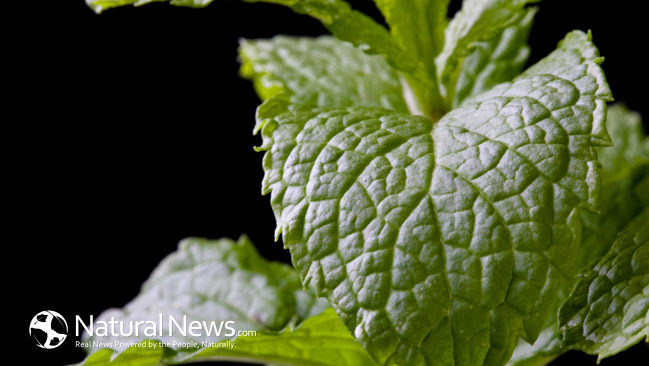With the large pharmacies of today, and the hundreds or even thousands of different medications they dispense, it’s easy to forget how many of our medicines originated from the plant world. Starting your own medicinal garden, or simply growing a few medicinal plants, is a great way to have treatments on hand, and potentially save expensive trips to the doctor or pharmacy.
Top 10 Medicinal Plants That Can Reduce Your Medical Bill Half Yearly
Red Clover
Red clover can be brewed into a tea which is great for settling down coughs and other symptoms of the common cold. It can also help detoxify the blood and make it easier for the body to rid itself of unwanted or harmful substances. In addition to this, it is also a traditional “women’s herb” to balance the hormones, especially for women going through menopause.
Aloe Vera
One of the best known medicinal plants, aloe vera is widely used for medicinal plants. Not only is aloe vera easy to grow, it can easily be grown indoors as well as outdoors. Aloe vera is used as an ingredient in a number of skin care products, but at home it can be used on the skin to treat burns, skin allergies, wounds and cuts, and even eczema. In addition to its usefulness in treating skin conditions, aloe vera juice may help to treat constipation, digestive problems, and even boost heart health by improving circulation.
Peppermint
Peppermint is one of the world’s oldest medicinal herbs, having been used for centuries. It is primarily used to treat digestive issues, particularly to help with digestion, gas, and upset stomachs, but has also been used to soothe headaches, and is enriched with Vitamins A and C. Naturally, peppermint helps keep your breath fresh, and may be used in cooking too. Peppermint can be grown both outdoors and indoors, and is relatively easy to grow.
Echinacea
This perennial American wildflower is a great one to have at home thanks to its antiviral and antibacterial properties, making it a good plant for both internal and topical healing. Echinacea has been shown to speed recovery times from illness, providing relief and stimulation to the immune system, and lessens the severity of cold and flu symptoms. It should be grown in somewhat sandy soil, in an area that gets mostly sun, and requires fairly regular watering.
Camomile
With a sweet, crisp, fruity and herbaceous fragrance, has long been used medicinally as a remedy for problems regarding the digestive system. It has a soothing and calming effect in the area of aromatherapy, used to end stress and aid in sleep. The entire herb is used to treat common aches like toothache, earache, shoulder pain and neuralgia.
Feverfew
A tea made from the whole plant is used in the treatment of arthritis, colds, fevers etc. It is said to be sedative and to regulate menses. An infusion is used to bathe swollen feet. Applied externally as a tincture, the plant is used in the treatment of bruises. Chewing 1-4 leaves a day has proven to be effective in the treatment of some migraine headaches.
Basil
Basil is well known and widely used as a popular cooking ingredient, but also contains a variety of healthy properties, and can be used for medicinal purposes too. It is known to treat flatulence and a lack of appetite, but is also used as treatment for cuts and scrapes, and contains antioxidants that may help fight against cancer. Basil is fairly versatile, and may be grown in both sun and shade, the garden or a container, and prefers moist soil.
Slippery Elm
The inner bark of the slippery elm can be ground into nutrient-rich porridge-like soup that serves as an excellent remedy for sore throats. Other than that, it can be used to soothe the digestive tract. The bark of the slippery elm was used as an abortion tool, moistened with water and inserted into the cervix, before it was banned by certain countries like the UK.
Lavender
Today, lavender is often used as a fragrance, and has been shown to help people to relax and be calm. However, lavender has been a useful medicinal herb since ancient times, and may be used to treat burns, bites, and most types of rashes, itching, or swelling. Lavender should not be consumed by pregnant or nursing women, and small children. It is a pretty resilient plant, able to handle a lot of sun, and does not require particularly wet soil.
Lemon Balm
Lemon balm has a wide range of medicinal uses, and is able to treat a large number of conditions, making it an excellent plant to have around the house. This plant is a relative of mint, with leaves that share a similar scent, and large flowers than can be rubbed against the skin to treat animal and mosquito bites, sores, wounds, and even herpes. In addition, lemon balm’s nectar can be used to make a juice that can treat everything from fevers, headaches, colds and coughs, and upset stomachs, to depression, anxiety, and insomnia. Lemon balm needs a fair amount of shade, and often blooms late; cutting it back may support regrowth.
Thyme
Thymol, the active component in thyme, is a strong antiseptic, making it excellent for the treatment of congestion, indigestion or gas, and coughs. Although unsubstantiated at this point, thyme has also been suggested to be a possible anti-cancer agent, and might even help with yeast infections and to regulate blood pressure levels. Thyme grows best from seedlings planted in a sunny spot, and does not require too much attention.
References:
Read Also:





